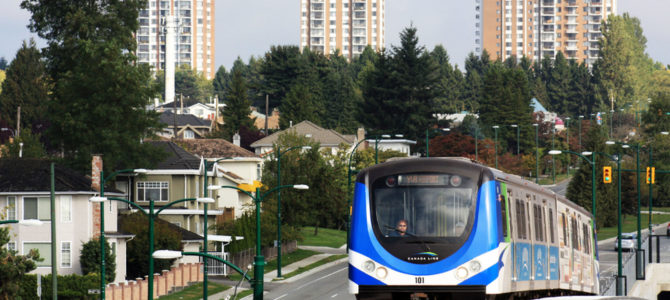
 Speeding up housing delivery in Broadway and Cambie Corridors
Speeding up housing delivery in Broadway and Cambie Corridors
Today, following a public hearing, City Council approved new low-rise (R3), mid-rise (R4) and high-rise (R5) apartments zones PDF file (49.1 MB) in certain areas of Broadway and the Cambie Corridor, making it faster, simpler and more predictable to build housing and support the delivery of vibrant, transit-oriented neighourhoods.
This work advances key directions from the Vancouver Plan, approved by City Council, to create more affordable housing and build complete, connected neighbourhoods. It also translates the approved policy directions from the Broadway Plan and Cambie Corridor Plan into zoning changes that help to meet plan objectives.
To maintain housing affordability, most new developments will need to include some form of social housing, below-market rental or purpose-built rental homes, with varying requirements depending on the location and type of project. For example, in high-rise zones (R5), projects on sites with existing purpose-built rental housing must secure the entire new building as rental, with 20% of the residential floor space reserved for below-market rental units.
To protect renters who may be impacted by redevelopment, the City’s Tenant Relocation and Protection Policy will ensure that existing tenants can return to their buildings at similar rents after redevelopment. The Province’s Residential Tenancy Act will also continue to protect renters' rights.
“Today’s approval is a major step forward in delivering the homes Vancouverites need, faster,” said Mayor Ken Sim. “We’re cutting unnecessary delays in the development process so that growth brings real benefits for everyone.”
Simplifying development
In Vancouver, rezonings can happen in two ways: through a City-initiated rezoning, where the City updates zoning for a larger area to match plans already approved by Council, or through a privately-initiated rezoning, where a landowner applies to rezone a specific property. City-initiated rezonings are a key tool for turning area plans and policies into action, helping deliver more housing more quickly.
Once enacted, these changes will allow eligible projects to proceed directly to the development permit stage, cutting approximately 12 months from the approval process, while still providing the public with the opportunity to comment on a project.
As part of the updates, the City also introduced standardized rules around building height, setbacks and other design requirements to simplify regulations, provide more flexibility, and reflect industry feedback and design testing.
Supporting housing growth
The updated zoning is designed to maximize existing and future transit investments, services, and amenities. It establishes a range of housing types, with many projects required to deliver social housing, below-market rental, or secured rental units. Building heights will be:
- R3: Low-rises between four to eight storeys
- R4: Mid-rises of approximately 12 storeys
- R5: High-rises around 20-22 storeys
Each new district also contains lower density residential options, such as detached houses, duplexes, townhouses and multiplexes.
Any new buildings must still follow design guidelines, height and density limits, and other requirements set by the City to ensure livability, and all existing, enhanced tenant protections in these areas will continue to apply.
Background
City-initiated rezoning is one of the implementation initiatives under the Vancouver Plan (2022), which includes direction to simplify, clarify and consolidate plans, policies and regulations to improve the development process. It is also part of a broader suite of actions approved by Council in June 2025 to support development viability.
City Council approved the Cambie Corridor Plan in 2018 and Broadway Plan in 2022 (amended 2024) following multiple phases of public and industry engagement, and technical work by staff. Since these area plans were approved, updates have been driven by new provincial Transit-Oriented Area (TOA) legislation External website, opens in new tab, insights from early implementation, industry input, and feedback from public consultations. This initiative was also a City commitment in our Housing Accelerator Fund (HAF) agreement with the Government of Canada.